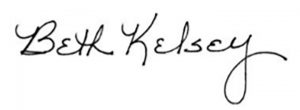Dear Colleagues,
Are you thinking about writing and wondering if you should work solo or with another author or authors? You might consider collaborating with one or more other writers on a manuscript for a number of reasons. Coauthoring can remove some of the isolation felt when writing alone. Joining with another author or authors can help to maintain enthusiasm for what can become a grueling process. Especially for the novice writer, collaborating with a more experienced author also can boost confidence and provide guidance to understand the process of publication. Experienced writers working together may appreciate the comradery of sharing different viewpoints on a topic and the stimulation of each other’s creativity. A writing project also may lend itself to the need for multiple types of expertise to achieve the best quality product. Because time management is often a concern, collaborative writing can facilitate reaching goals and deadlines.
Successful collaboration in writing does take planning that starts well before the writing begins and requires open communication throughout the process. Clearly defined roles and responsibilities, ground rules, and time frames are crucial to collaboration efficiency and effectiveness. As a start, and to avoid later conflicts, all potential authors should establish together who meets criteria for authorship and whose contributions can be acknowledged in other ways. This activity should be approached in a supportive and collegial manner to promote shared understanding and a positive experience for all.
An author is someone who has made substantive intellectual contributions to a manuscript. To guide decision making, the International Committee of Medical Journal Editors has established authorship criteria. To be included as an author, an individual must meet all four of the following criteria: substantial contributions to the conception or design of the work, or the acquisition, analysis, or interpretation of data for the work; drafting the work or revising it critically for important intellectual content; final approval of the version to be published; and agreement to be accountable for all aspects of the work in ensuring that questions related to the accuracy or integrity of any part of the work are appropriately investigated and resolved.1
An individual who does not meet all of these criteria for authorship should not be listed as an author. Individuals who meet some but not all four criteria can be acknowledged as contributors with their contributions specified. Acknowledgments are generally used to recognize people who contributed to the research or project on which the manuscript is based or in the preparation of the manuscript but do not qualify for authorship. In the acknowledgment section of the manuscript, the author can give credit to those who assisted with the work, such as individuals who gave advice on the project, provided statistical or technical support, or assisted in the writing or critical review of the manuscript. The inclusion of names in the acknowledgment may suggest endorsement of the content of the manuscript. For this reason, the individuals to be named should have the opportunity to read the manuscript and consent in writing to be acknowledged.
Once the authors are decided on, a discussion should occur about the tentative order of names on the manuscript. Although this may not seem like a need early in the planning, it provides transparency, discussion of what is important for each author, and promotes collegiality. Decisions about order are the prerogative of the authors, not the journal editor. In some instances, level of contribution to the manuscript may be evident and used for determining order, but this is not always the case. Sometimes authors are listed alphabetically or even reverse alphabetically. It is generally accepted, when a manuscript is based on a student scholarly paper, they should be first author. Whatever strategy is used, it needs to be made certain that everyone agrees and these early decisions recorded for them to be available should questions or issues arise or revisions in order become warranted. If disputes arise, these should be discussed amicably as a group, working together to understand each person’s point of view.
There is much more to consider in collaborative writing. However, open discussions about authorship and decisions on which all agree are paramount and are the basis for creating strong professional writing relationships.

Beth Kelsey, EdD, APRN, WHNP-BC, FAANP
Reference:
International Committee of Medical Journal Editors. Recommendations for the conduct, reporting, editing, and publication of scholarly work in medical journals. Updated December 2021.

